We’ve ridden little and large Harleys this month. The weenie is the Harley-Davidson X350, a Harley that costs under $10k (review next month).
And the next day we attended the Australasian launch of the 2024 Road Glide and Street Glide on the Gold Coast. What a contrast! These are significant updates to their Grand Touring models.
Both are baggers with hard panniers and sell for $NZ50,490. So it’s a case of choosing which one you prefer from a styling standpoint, essentially. Ride and handling differences are relatively minor.
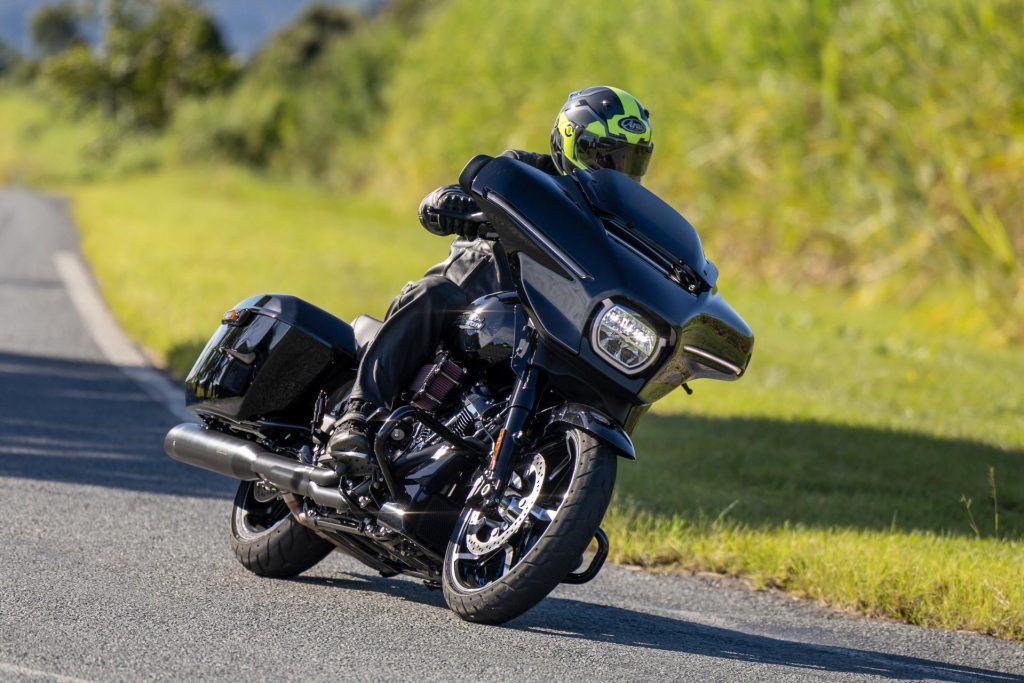
The launch of the two newbies was based near Tweed Heads, taking in the sinuous roads of the Gold Coast Hinterland. Known as “the green behind the gold” it is visually stunning.
Cane fields give way to the lush rain forests of Numbinbah Valley and on towards Mt Beechmont.
This pair is differentiated by their bodywork. The Street Glide features a batwing fairing with a single round headlight. On the Road Glide the fairing is beefier, broader with rectangular headlamps.
Both bikes are restyled. They appear longer, smoother, and more muscular. New colour options for 2024 are crackers.
The infotainment system is new and banging, and the bikes each lose almost 10kg in weight. That’s due mainly to mass culled from the fuel tank and triple tree.
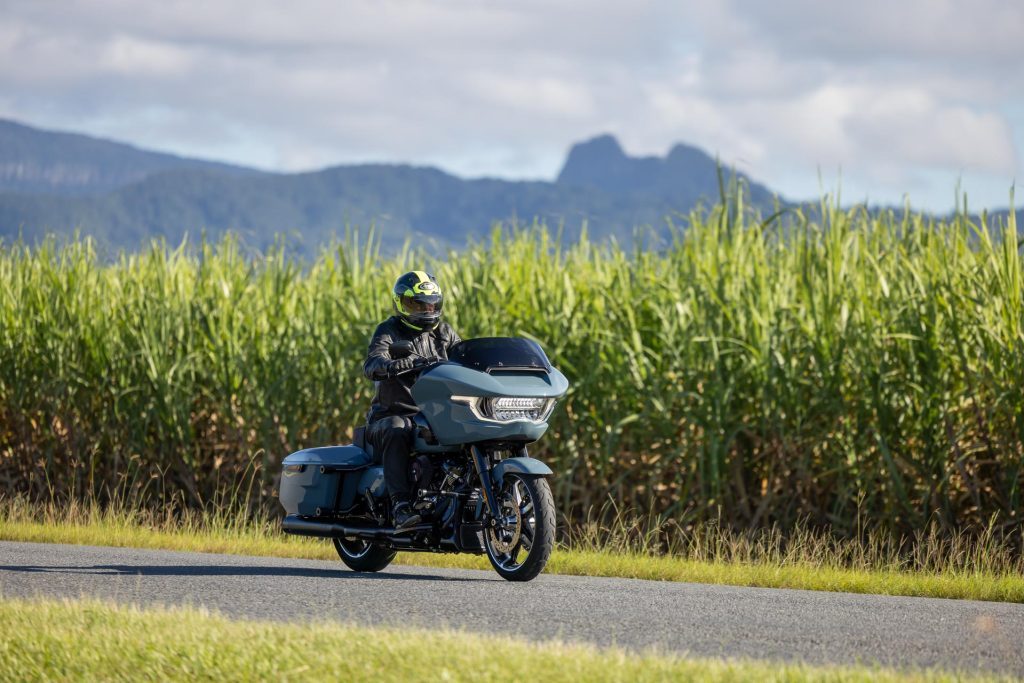
Otherwise, they are mechanically similar. The big news is the update from the Milwaukee-Eight 114 engine to the 117 V-twin (1923cc), raising power and torque by 11 and 7 per cent, respectively.
Extra displacement aside, the increase is the result of improved intake and exhaust flow, and a new cylinder head design. Peak power is out to 78kW at 4600rpm while torque is a mammoth 176Nm developed at 3250rpm.
A new cooling system reduces heat transfer to the rider. Leg roasting with the previous model has disappeared entirely. They also get new suspension by Showa, with 76mm of travel at the rear, up 50 per cent.
So which of this pair is the better bike? To be honest, I vacillated. Both were deeply impressive as all-day tourers, which is really what they were designed to do, after all.
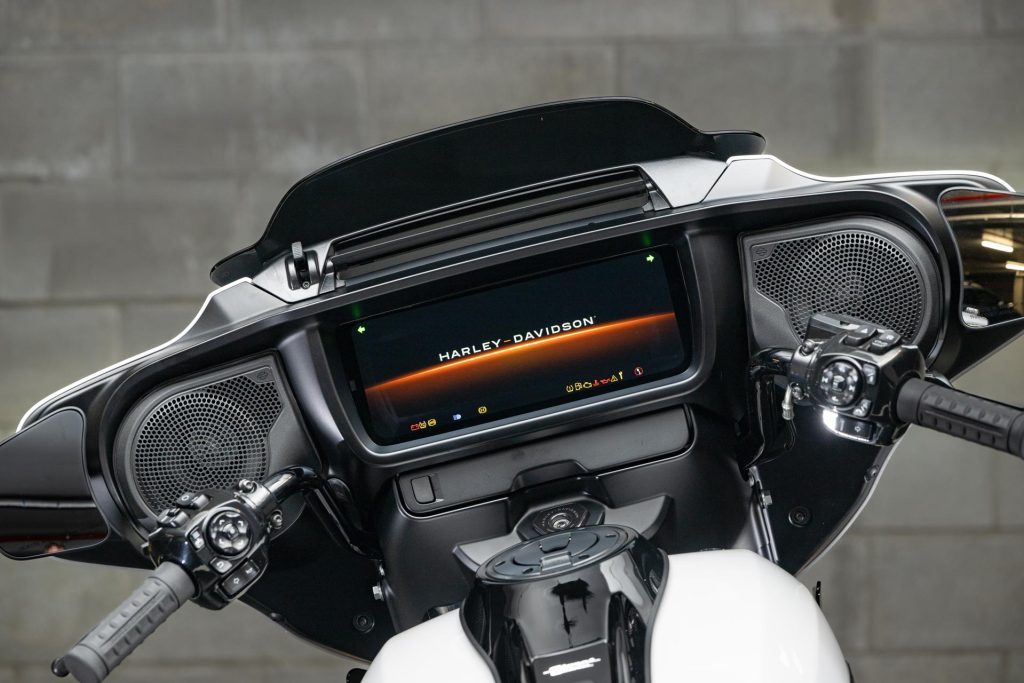
You’d probably opt for the Road Glide if you were serious about long haul rides. We found it a little plusher in the suspension, and the larger fairing keeps off more wind and weather.
That said, I preferred the Street Glide because it is a little lighter, has a smaller batwing-style fairing, arguably looks better and feels sportier. Its fairing is noisier and, being shorter, doesn’t exclude as much wind.
That said, it rained on and off for about 15 minutes and I scarcely got a drop on me, just a wet visor.
Both showed how truly agile they are for genuinely big bore bikes, threading the needle on sinuous hill roads and mountain climbs and descents with ease.
They turn so effortlessly considering their size and bulk. And ground clearance is decent too; we touched down once, leaned over on a bumpy corner.
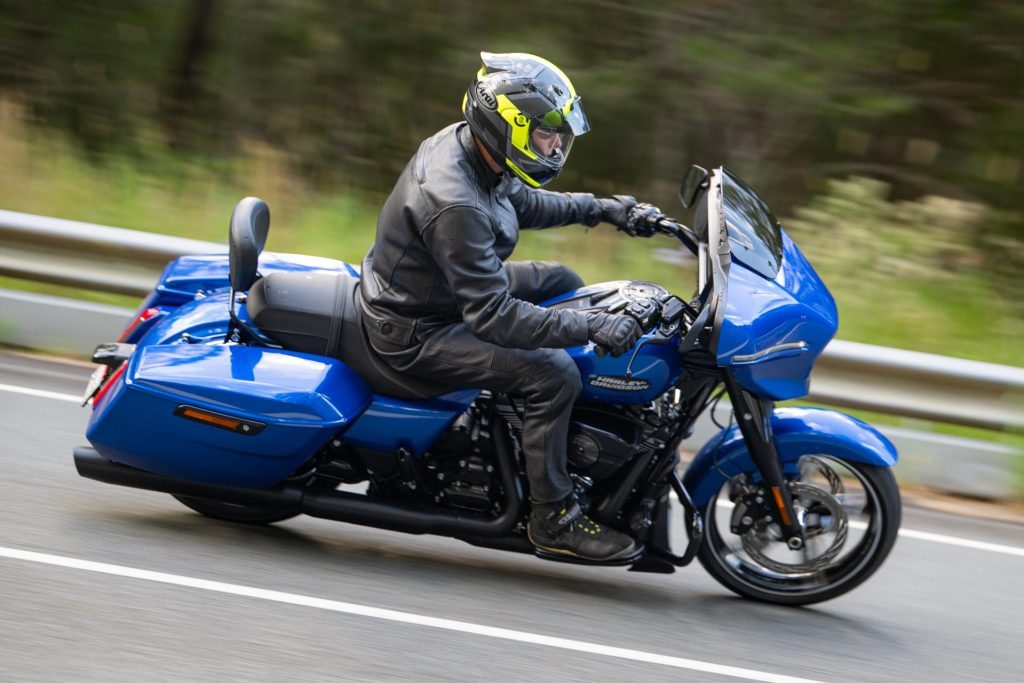
There were a dozen bikes to ride, some with Screamin’ Eagle air cleaners, others with titanium slip-on mufflers that you’d probably want to look into because they sound so damn good.
It’s the low end torque of the new motor that impresses greatly on the go, pulling smoothly without hesitation from 1500rpm, and with guts and glory from 2000rpm.
Both are doing 2300rpm at 100km/h in top. The transmissions are better than any I’ve experienced in big Harleys; not too hefty, and positive when done right.
There are several ride modes now. We tried rain when it was wet. It backs off power output noticeably.
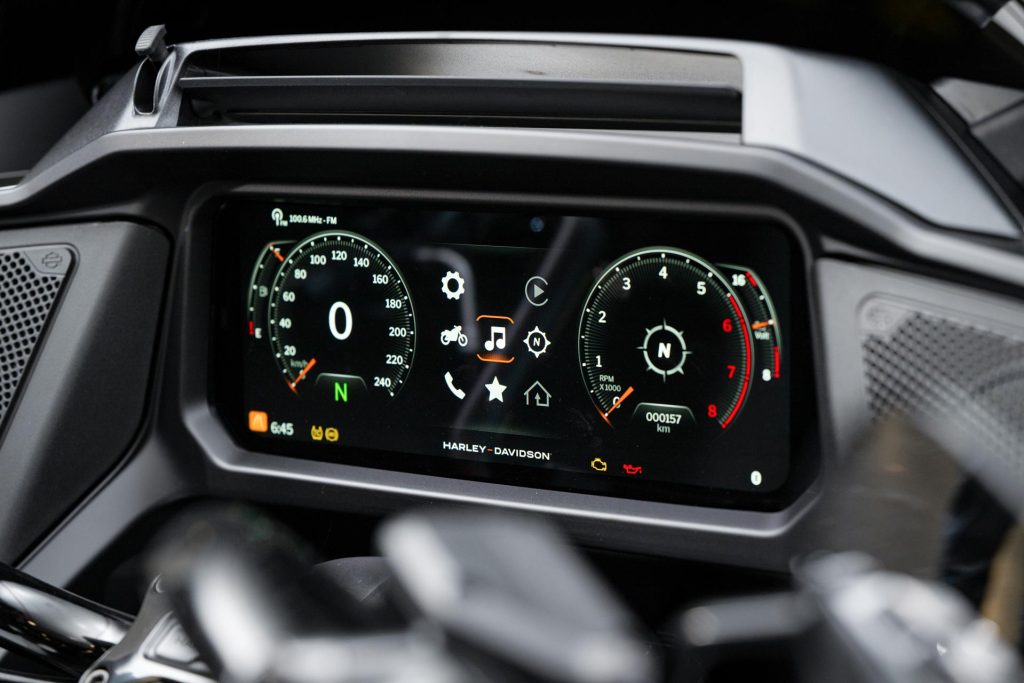
That didn’t stop me from having a moment hitting the rear brake into a corner I’d misjudged but the slide was gradual and caught by the cornering TC and corner ABS electronics without suit soiling.
There are also Road and Sport modes, the latter with sharper throttle response, and there’s a Custom setting. We found the Road mode spot on and kept returning to that.
Brakes are burly axial-mount jobbies. After adjusting the brake lever for hand span, we found them plenty effective. It’s a linked system so stomping on the rear also invokes a bit of action up front.
They work best together, and are strong, with a little fork dive if you hit the fronts hard.
A few of the bikes had some of the accessory handlebars and risers fitted. The first we hopped aboard, a Road Glide, had short Moto bars that seemed a bit of a stretch.
Later we tried another RG with regular bars and the riding triangle was superb. Both of these feature some of the best ergos I’ve encountered on a cruiser.
The running boards help, making it easy to weight the bike for corners. Some had aftermarket air cleaners too, which my right knee sometimes ran into.
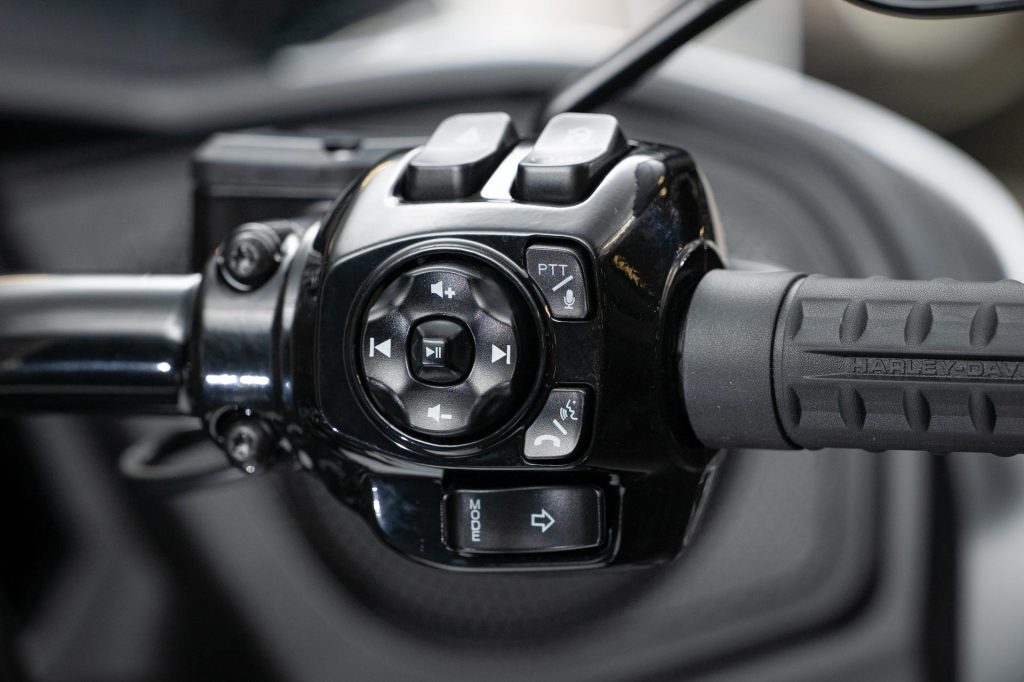
The Street Glide has natty wee bar end mirrors that show only what’s behind, not what jacket you’re wearing. But you can’t hang your helmet on them when stopped, like with the Road Glide.
The new instruments look amazing. Gone are the multiple dials and in their place a huge 12.3 inch touchscreen which is high resolution and configurable. In the Sport mode the speed is sensibly displayed within the rev counter.
There’s also fuel use data, showing in the low fours on the motorway, in the mid fives up into the hills. After a six-hour ride the bikes still had a quarter of a tank remaining.
Moreover, I had no sore bits anywhere, either on the day or thereafter.
The touchscreen can be operated with gloves, though it’s also easy to manipulate from the left hand switch block.
Engine modes have a shortcut switch on the right indicator. Both bikes also come with cruise control, which is oh-so easy to operate. They’re also keyless, as are most H-Ds these days.
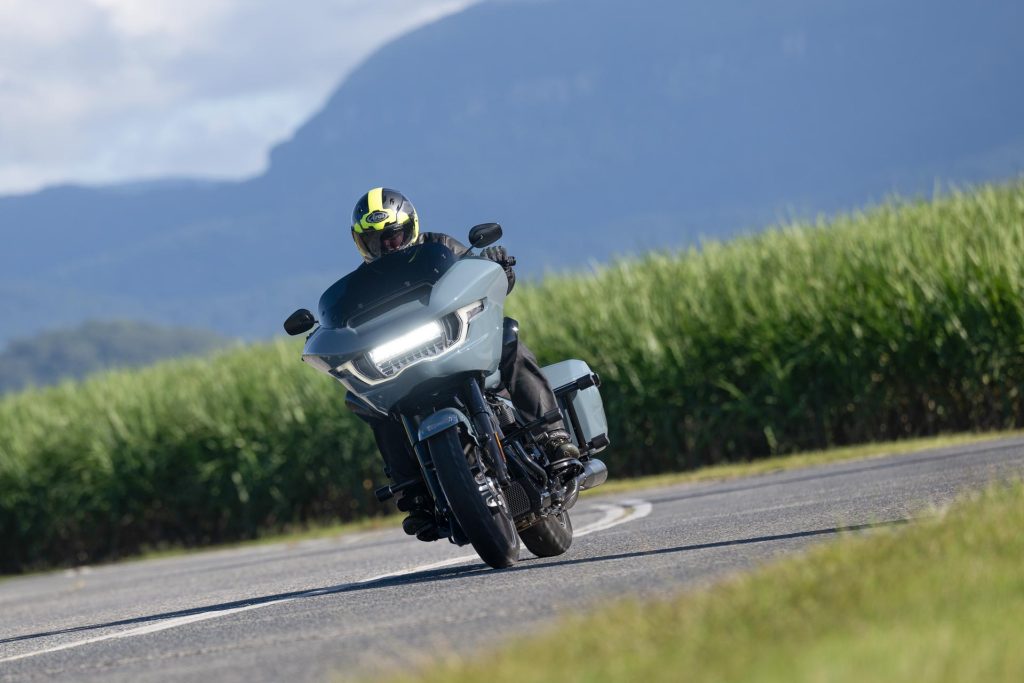
Both bikes represent a significant upgrade on their predecessors and are amongst the best of the traditional Grand Tourers.
You could spend $20k more on a CVO but both of these likely come within 90 per cent of that.
Or you could opt for a modern tourer, like the Harley-Davidson Pan America which kicks off at $31k here but doesn’t come with luggage, nor the traditional style of the Road and Street Glides.
| Model | Harley-Davidson Road Glide / Street Glide |
| Price | $50,490 |
| Format | V-Twin / EFI |
| Engine | 1923cc |
| Max Power | 80 kW @ 5020 rpm |
| Max Torque | 175 Nm @ 3500 rpm |
| Fuel Economy | 6L / 100km |
| CO2 Output | 144g/km |
| Drivetrain | Belt final drive |
| 0-100km/h | 4.1s |
| Weight (claimed) | 368-380 kg |
This story first appeared in the June 2024 issue of NZ Autocar magazine.


